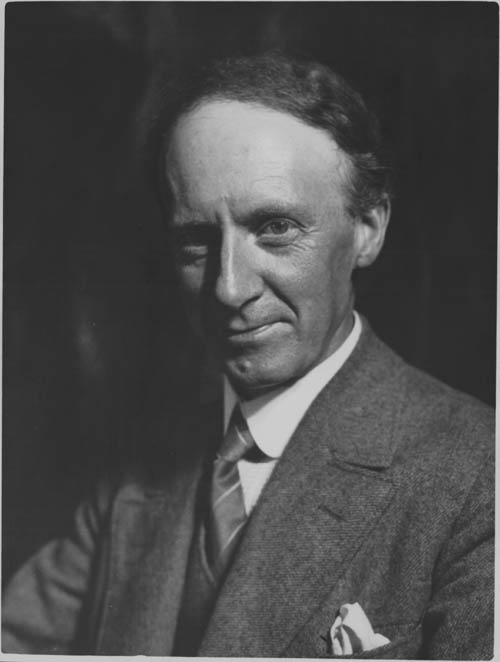- J. E. H. MacDonald
Infobox Artist
name = J.E.H. MacDonald

imagesize = 200px
caption = J.E.H. MacDonald
birthname =
birthdate =12 May 1873
location =Durham ,England
deathdate = death date and age|1932|11|26|1873|05|12
deathplace = Toronto, Ontario,Canada
nationality = English-Canadian
field =Painting
training =
movement =Group of Seven
works = "The Tangled Garden", "The Solemn Land"
patrons =
influenced by =
influenced =Canadian Group of Painters
awards =James Edward Hervey MacDonald (
May 12 1873 , Durham, England –November 26 1932 ) was a member of the famous Group of Seven Canadian artists.Biography
In 1887, at the age of 14, Macdonald moved with his family to Hamilton. In 1889 they moved again to Toronto, where he studied commercial art and became active in the Toronto Art Student League. In November 1911, MacDonald exhibited sketches at the Arts and Letters club. this was an important step, as the exhibit brought him to the attention of
Lawren Harris . He won acclaim in 1912 for his role in an exhibition at theOttawa Society of Artists . In January 1913 he traveled toBuffalo, New York , where he found in an exhibit of Scandinavian Impressionist paintings an uninhibited approach to northern wilderness that could be adopted by Canadian painters. By that year other Torontonian commercial artists also interested in the potential of original Canadian expression were beginning to congregate around him and Harris. Later that spring MacDonald wrote to A. Y. Jackson inviting him to come to Toronto, which he did in May.Early critical reception
In March of 1916 Macdonald exhibited "The Tangled Garden" at the OSA to the derision of art critics. It was a fairly conventional post-impressionistic painting of sunflowers, one that has much in common with Van Gogh's treatment of the subject from nearly forty years before Fact|date=September 2008, but Canadian critics accustomed to the smooth blending and muted tones of Canadian academic art in the style of the
Canadian Art Club were taken aback by the brightness and intensity of the colors. "An incoherent mass of color," wrote an anonymous reviewer for theToronto Star Citequote|date=August 2008. Hostile art critics thereafter singled out MacDonald for attacks in the press. [Robson, 9. "Beginning in 1916... his large canvases dominated the exhibitions and incidentally attracted the major portion of press criticism"]Later career
In Autumn 1918, MacDonald travelled to Algoma in a specially outfitted railroad car that functioned as a mobile studio. He would follow this routine for the next several Autumns. From the car he did some of his most acclaimed paintings, including "The Solemn Land" of 1920.
MacDonald traveled to the Rockies every summer beginning in 1924; mountainous landscapes dominate his later work. By this time he had become somewhat alienated from the rest of the Group of Seven, as many of the younger members were beginning to paint in a more abstract manner. From 1928 until his death MacDonald served as the Principal of the Ontario College of Art, and painted with less frequency and less consistent success.
External links
* [http://archives.cbc.ca/IDD-1-68-754/arts_entertainment/group_of_seven/ CBC Digital Archives - The Group of Seven: Painters in the Wilderness]
Footnotes
References
* Reid, Dennis (1988). "A Concise History of Canadian Painting, Second Edition." Don Mills: Oxford University Press Canada. ISBN 0-19-540663-X.
*
Wikimedia Foundation. 2010.
